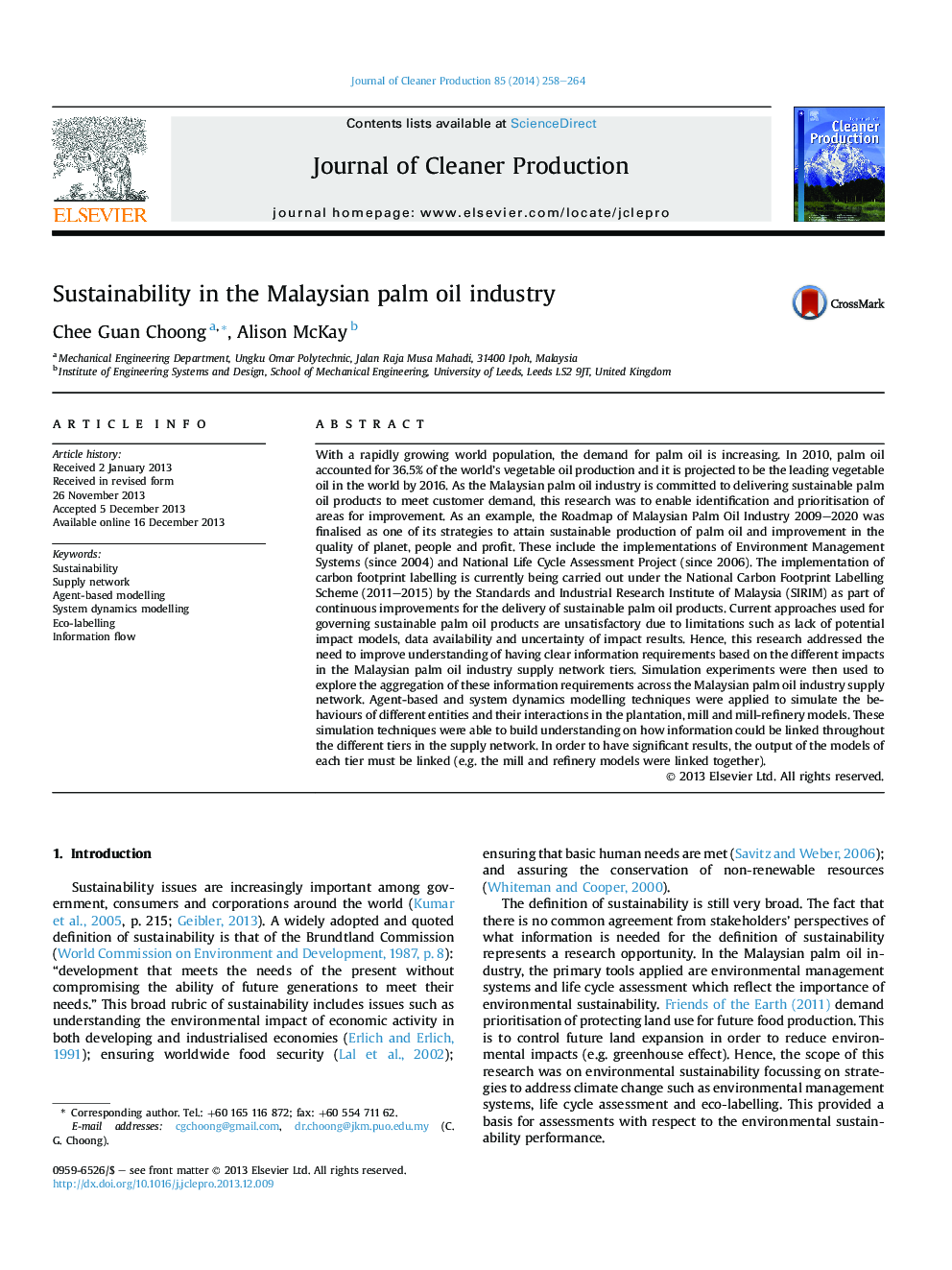| کد مقاله | کد نشریه | سال انتشار | مقاله انگلیسی | نسخه تمام متن |
|---|---|---|---|---|
| 1744819 | 1522161 | 2014 | 7 صفحه PDF | دانلود رایگان |
With a rapidly growing world population, the demand for palm oil is increasing. In 2010, palm oil accounted for 36.5% of the world’s vegetable oil production and it is projected to be the leading vegetable oil in the world by 2016. As the Malaysian palm oil industry is committed to delivering sustainable palm oil products to meet customer demand, this research was to enable identification and prioritisation of areas for improvement. As an example, the Roadmap of Malaysian Palm Oil Industry 2009–2020 was finalised as one of its strategies to attain sustainable production of palm oil and improvement in the quality of planet, people and profit. These include the implementations of Environment Management Systems (since 2004) and National Life Cycle Assessment Project (since 2006). The implementation of carbon footprint labelling is currently being carried out under the National Carbon Footprint Labelling Scheme (2011–2015) by the Standards and Industrial Research Institute of Malaysia (SIRIM) as part of continuous improvements for the delivery of sustainable palm oil products. Current approaches used for governing sustainable palm oil products are unsatisfactory due to limitations such as lack of potential impact models, data availability and uncertainty of impact results. Hence, this research addressed the need to improve understanding of having clear information requirements based on the different impacts in the Malaysian palm oil industry supply network tiers. Simulation experiments were then used to explore the aggregation of these information requirements across the Malaysian palm oil industry supply network. Agent-based and system dynamics modelling techniques were applied to simulate the behaviours of different entities and their interactions in the plantation, mill and mill-refinery models. These simulation techniques were able to build understanding on how information could be linked throughout the different tiers in the supply network. In order to have significant results, the output of the models of each tier must be linked (e.g. the mill and refinery models were linked together).
Journal: Journal of Cleaner Production - Volume 85, 15 December 2014, Pages 258–264
